Content from the Brookings-Tsinghua Public Policy Center is now archived. Since October 1, 2020, Brookings has maintained a limited partnership with Tsinghua University School of Public Policy and Management that is intended to facilitate jointly organized dialogues, meetings, and/or events.
It’s undeniable that North Korea’s unexpectedly rapid development of intercontinental ballistic missile capabilities—to complement its nuclear weapons program—presents a serious challenge to U.S. national security. It has occasioned scores of commentaries with suggestions on how to cope with the emerging threat to the U.S. homeland posed by a rogue regime led by an international lawbreaker who has not hesitated to unleash violence against internal and external foes. There has been no shortage of suggestions about how the United States should react. There have been, however, very few proposals with a realistic chance of eliminating the threat.
Short-term fixes are the wrong approach. Instead, the United States and its allies should prepare an assertive policy of deterrence and containment of North Korea.
7 approaches that won’t work
It is much easier to describe why various proposals will not work than to find the magic bullet that will. Before laying out what I think we should do, here are the broad categories of options that have been put forward. These have to be considered, but they either will not work or will have intolerable costs:
- A U.S. preemptive strike to take out North Korea’s nuclear weapons and ballistic missiles. Such a strike would invite devastating retaliation by North Korea against South Korea and perhaps Japan. With some 15,000 conventional artillery launchers within 50 miles of Seoul, North Korea is capable of causing mass casualties in the South, even without resorting to nuclear missiles. An all-out war in the Korean peninsula would likely produce large-scale American casualties. Additionally, even if such a war were successful, there would be angry calls in South Korea for terminating the alliance with the United States in the wake of a U.S.-triggered conflict; there could be a risk that we would have traded a dysfunctional North Korean enemy for a vastly more capable Korean foe.
- Negotiations on the basis of the 2005 Six-Party agreement (United States, China, Japan, Russia, South Korea, and North Korea). These would call for the denuclearization of the Korean peninsula in exchange for concessions and aid to North Korea from the United States, Japan, and South Korea. This would be a desirable and sensible approach—indeed one that the George W. Bush and Obama administrations followed—but unfortunately, Pyongyang has made it clear it has no interest in such a negotiation. It insists it is a nuclear power and has written possession of nuclear weapons into its constitution. So this reasonable suggestion appears to be a non-starter.
- A freeze-for-freeze option. China and Russia have proposed a freeze on U.S.-South Korea major joint exercises in return for a North Korean freeze on nuclear and ballistic missile testing. This proposal would accept the equivalency of prudent U.S.-South Korea self-defense exercises with nuclear weapons testing by the only country in the world engaged in such, whose intent is to intimidate and develop the capability to cause mass destruction among its neighbors. As former Six Party negotiator Christopher Hill has pointed out, accepting such a precondition for negotiations would encourage loss of confidence in the U.S.-South Korea alliance, which is one of Pyongyang’s principal diplomatic objectives.
- Negotiations without preconditions. This is invariably a popular proposal in dealing with belligerents. In this case, however, it would be a non-starter. The North Koreans have evinced no interest in a negotiation that does not validate their status as a nuclear weapons power. If they were to show up for such talks, as some think they might, the North Koreans could be expected to continue development of their nuclear and missile programs while negotiations continued. The North Koreans would see such talks as tantamount to U.S.-Soviet arms negotiations, which treated the parties as equal and limited numbers of nuclear weapons and missiles on both sides. This is not a road the United States should go down.
- Treating North Korea as a problem for China to solve. President Trump seems to believe that China could easily solve the North Korean problem, presumably by exerting intolerable economic and/or military pressure on Pyongyang:
I am very disappointed in China. Our foolish past leaders have allowed them to make hundreds of billions of dollars a year in trade, yet…
— Donald J. Trump (@realDonaldTrump) July 29, 2017
…they do NOTHING for us with North Korea, just talk. We will no longer allow this to continue. China could easily solve this problem!
— Donald J. Trump (@realDonaldTrump) July 29, 2017
While there is no doubt that China could exert greater pressure on North Korea, and indeed should do so, that will not end development of the North’s WMD programs. North Korea has built its programs substantially on its own, with some technology and parts acquired illicitly from abroad and some funding provided by its limited exports. The alliance between North Korea and China is a thing of the past. North Korea understands that there is almost no scenario in which Chinese troops save North Korea as they did in 1950. The two enjoy at best a cold relationship that is likely to worsen. North Korea ranks among the lowest countries in the world in terms of foreign trade. Chinese pressure should be part of any solution, but it will not by itself be decisive.
- Sanctioning Chinese companies that trade with North Korea. Such an approach has some of the same shortcomings as relying on China to solve the North Korea problem. China may be responsible for 90 percent of North Korea’s foreign trade, but the total amount is trivial. A complete halt in Chinese economic interaction with North Korea—which is not in the cards—would no doubt be painful for the North, but Pyongyang would find ways around it, through smuggling, an opening to South Korea (which South Korea’s new president could reciprocate), yet greater self-reliance, and endless belt-tightening. If Washington goes too far in sanctioning Chinese companies, China would retaliate by diminishing or eliminating its cooperation with the United States on North Korea, which would be devastating for any successful outcome.
- Making U.S. relations with China contingent on China solving the North Korean nuclear problem. Such an approach would trade one problem for two: A North Korean nuclear threat would be compounded by a hostile relationship with the world’s number two power, with whom we need to cooperate on numerous global economic, security, and political issues.
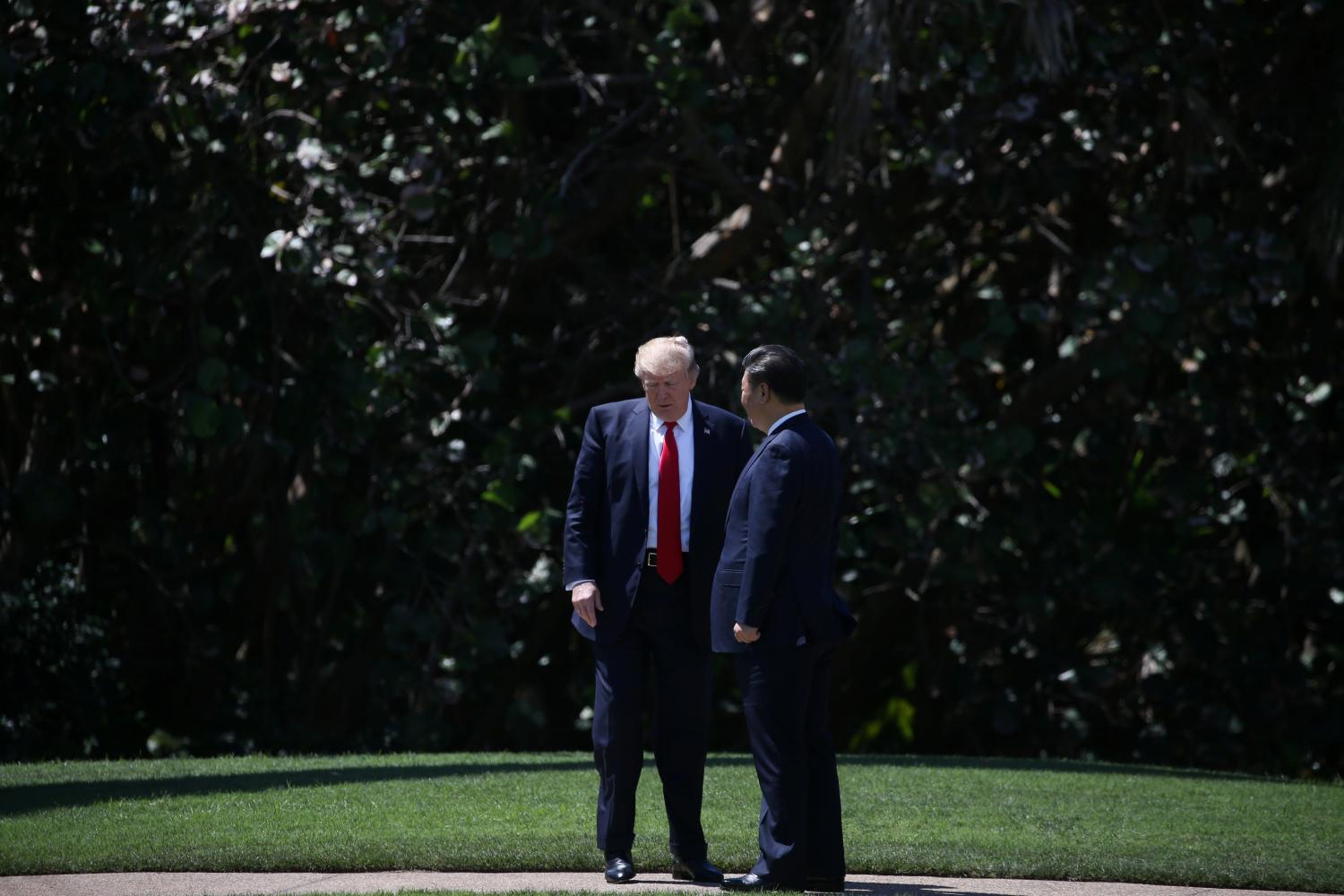
What would Kennan do?
So what should the United States do in the face of an intolerable security threat from North Korea?
We need to realize that while some situations may be unacceptable, they do not lend themselves to short-term fixes. The North Korean challenge is one of them.
The alliance between North Korea and China is a thing of the past.
America’s foremost early Cold War strategic thinker and diplomat, George Kennan, analyzed the challenge posed by the Soviet Union in 1947 in a famous article in Foreign Affairs magazine, in which he laid out the argument for containment, deterrence, and pressure. Faced with a foe against whom we could not reasonably afford to contemplate an offensive war aimed at regime change—and who viewed its survival as dependent on hostility to the United States—Kennan argued for a strategy based on the Soviet Union’s relative weakness vis-à-vis the United States. He contended that over time, the USSR would reform or crack under the pressure exerted by the United States and its allies. As it developed over the next four decades, the containment policy was active and assertive, featuring the world’s strongest alliance in NATO, extensive economic sanctions against the USSR by the United States and NATO, a long-term military build-up and proxy wars around the globe (contrary to Kennan’s advice), and a public relations and propaganda battle.
The differences between the Soviet Union and North Korea of course are immense, and by invoking Kennan’s article and the strategy that grew out of it, I do not mean to suggest any comparability between the two. One was a global challenger by a military peer based on an anti-imperialist ideology and intellectual tradition, an empire of like-minded satellite states, and a worldwide network of tools of influence and propaganda outlets; the other is a poor and isolated small country of no global or regional influence. Notwithstanding these fundamental differences, some of the challenges are similar:
- How to deal with a nuclear-armed foe with whom armed conflict, if not unthinkable, is at least a profoundly unattractive option;
- How to utilize our enormous advantages against a foe with one strength and many profound and eventually fatal weaknesses;
- How to prevent serious strategic setbacks in relations with allies if we pursue a policy of either excessive confrontation or one of weakness; and
- How to prevent massive loss of life while the problem is unsolved, while using the tools that give us an overwhelming advantage to ensure ultimately a successful outcome.
An assertive policy of deterrence and containment of North Korea could involve the following elements:
- Military pressure on North Korea through exercises, modernization of weapons systems deployed in the area, and willingness by the United States and South Korea to respond forcefully to North Korean military provocations as we have not done in the past;
- Development and deployment of anti-ballistic missile capabilities to defend the U.S. homeland, U.S. forces in the region, and our Japanese and South Korean allies;
- Imposition of as close to an international embargo on trade and investment relations with North Korea as we can persuade the international community to adopt;
- A three-way dialogue among the United States, South Korea, and China about how we would react to various contingencies in North Korea, such as instability or breakdown;
- Understanding that the United States cannot achieve its objectives without close collaboration with both South Korea and China, North Korea’s land neighbors. In the case of China, we should be prepared to sanction Chinese entities that engage illicitly with Pyongyang in order to demonstrate we’re serious, but not go so far as to alienate China from the overall effort against North Korea;
- No assurances to North Korea of acceptance of its regime prior to agreement to denuclearize. Covert actions against the North should be part of a deterrence and containment strategy; and/or
- Strengthened political and military alliances with South Korea and Japan. We should not encourage either to develop nuclear weapons, which would make an already fragile regional security situation more unstable, but we should take steps to provide unmistakable assurance to both that the full range of U.S. military retaliatory options and protection would be available if either were threatened.
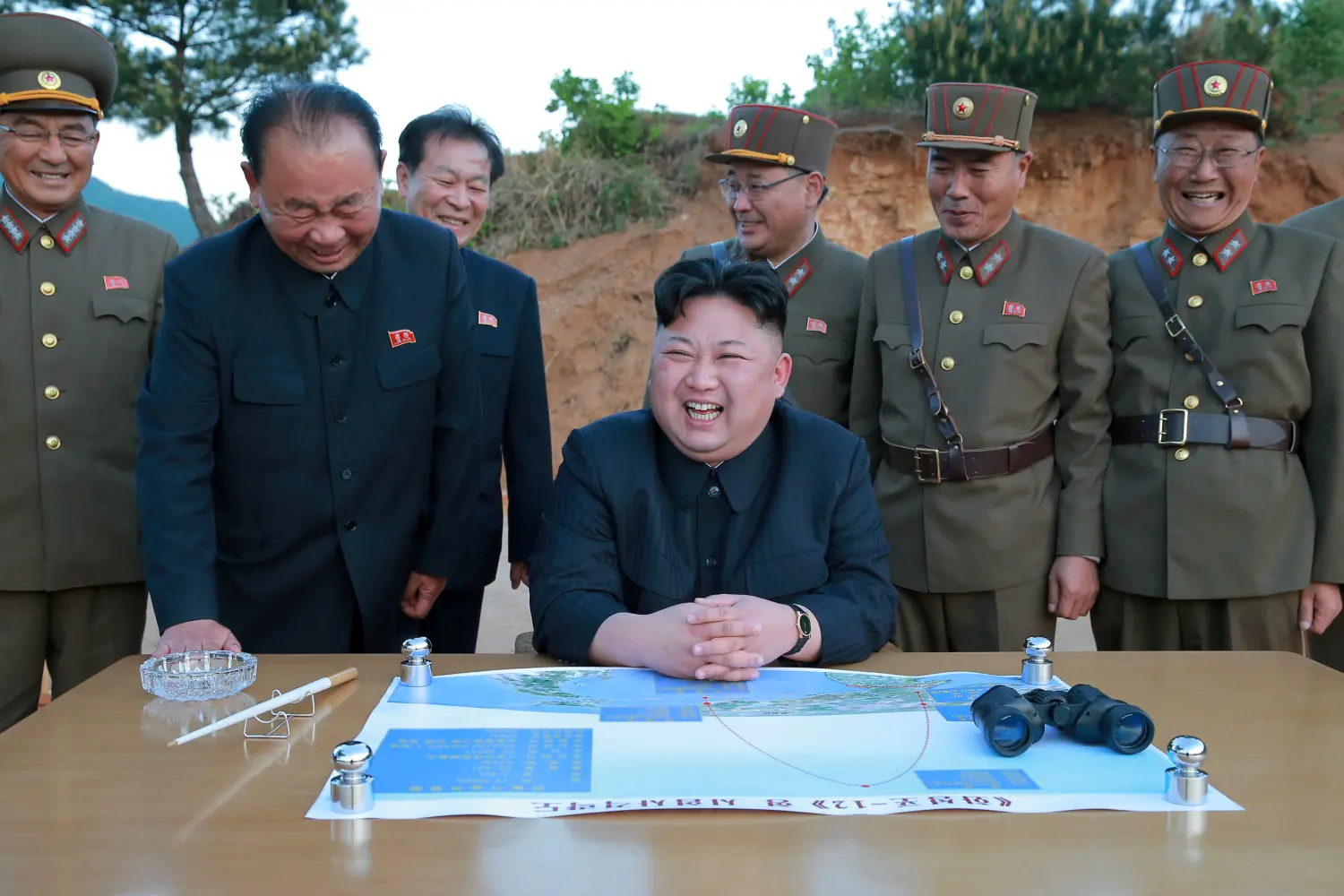
Pyongyang’s Choice
Containment and deterrence are not appealing options, just as many condemned those approaches as passive, immoral, and defeatist during the Cold War. In fact they were none of those then, and would be none of those now.
But before we accept the necessity of such an approach, we could offer the North Koreans—both directly and through the South Koreans and the Chinese—one last chance for them to turn away from the disastrous course they are on. We could propose a deal that would offer them much of what they say they want in return for their complete denuclearization and dismantling of their missile program, namely:
- Establishment of full diplomatic relations;
- End of the economic embargo and sanctions, economic assistance, and investment; and
- A peace treaty to replace the 64 year-old armistice agreement.
In such an agreement, both sides would need to undertake carefully staged and backloaded steps, since trust is nonexistent. Each side could commit to these objectives at the outset, with the timeline and key implementing framework to be negotiated. There would be nothing in such an agreement that would be contrary to U.S. national security interests, and it would provide to North Korea the security that it claims justifies its nuclear weapons programs. Such a package would provide assurance to Pyongyang that any collapse of its system would be due to its own failings, not the actions of outside powers.
There is little reason to believe Pyongyang would accept such a proposal, as it seems to have dug in its heels on the need for a nuclear missile capability to strike the United States. It is important, however, to demonstrate to the South Korean government, and to President Moon Jae-in, that Washington is prepared to put an attractive offer on the table, since Moon is seeking avenues for reconciliation with the North. Moon could be given a leading role in trying to persuade Pyongyang to accept such a proposal. If Pyongyang refuses, as is likely, Moon will be more likely to support a serious containment and deterrence strategy.
The proposal would also provide an effective counter to periodic Chinese and Russian suggestions that North Korea’s WMD programs are a natural and understandable response to the U.S. “threat” by making clear there would be no U.S. threat if Pyongyang denuclearized. Moreover, it would give the United States the moral high ground, making more likely Chinese and Russian support for the tough containment strategy that probably will be necessary.
Such a U.S. negotiating strategy could be pursued both in cooperation with Seoul and through the Six-Party framework, but neither with optimism nor a desperation to succeed at all costs. The United States should simultaneously gear up for the long-term efforts that will likely be required to contain, deter, and isolate a nuclear-capable North Korea for years to come, until the North either reforms or cracks. The North can choose between the two paths of negotiation and isolation. It is unlikely to find a third.



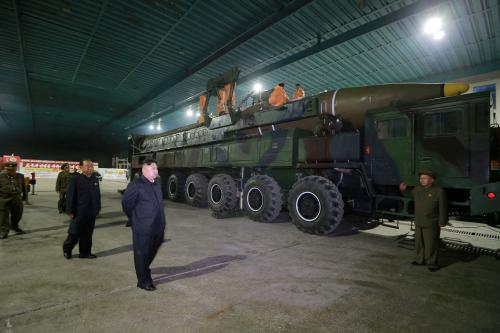
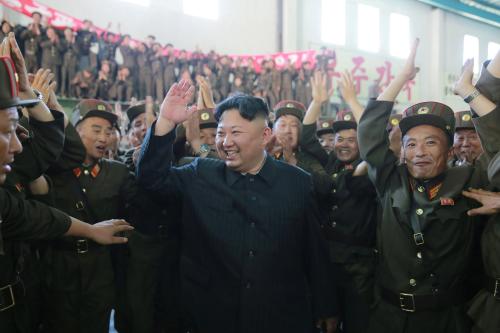
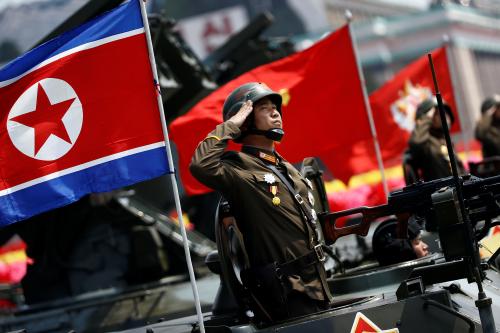

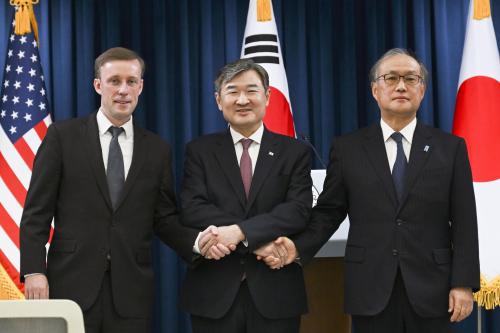
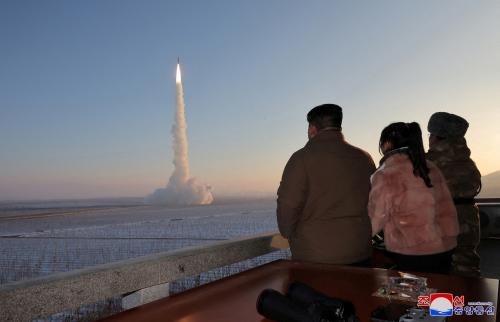
Commentary
Why deterring and containing North Korea is our least bad option
August 8, 2017